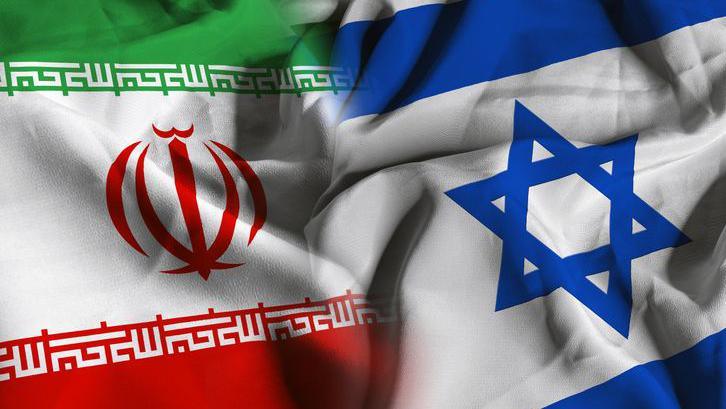ANALYSIS: Behind Iran's Nuclear Defiance, A Strategy of Deception and Hardening

VIENNA — A series of recent escalatory actions by Iran has significantly intensified a global standoff over the country's atomic ambitions, raising new questions among international observers about the viability of diplomatic engagement. Tehran's decision to bar senior international inspectors and remove surveillance equipment from key sites coincides with new intelligence assessments suggesting core components of its nuclear program are now hardened beyond the reach of conventional military options, creating a complex and volatile new reality for policymakers.
The moves have pitted the Islamic Republic against the International Atomic Energy Agency (IAEA) and Western nations, who argue that Tehran's actions are making it impossible to verify the peaceful nature of its program. The developments have effectively dismantled years of oversight protocols and fueled accusations that Iran is pursuing a strategy of deliberate concealment.
Mounting Obstructions to International Oversight
The immediate crisis was triggered by Iran's overt obstruction of international verification efforts. According to statements from the IAEA, Tehran has not only banned the agency's chief, Rafael Grossi, from critical sites but has also systematically removed surveillance cameras installed under prior agreements. Officials at the Vienna-based agency have stated that without this access, they can no longer provide assurances that nuclear material is not being diverted for military purposes.
In a formal statement, Iran's representative to the UN attributed the move to security concerns, claiming that sensitive data from IAEA cameras had previously been obtained by Israel and used for sabotage. "Iran cannot continue to allow its sensitive information to be compromised under the guise of international inspections," the statement read.
However, Western diplomats have dismissed this justification as a transparent pretext. One senior European official, speaking on the condition of anonymity, described the action as a deliberate effort to "create a black box" around its most sensitive activities. "This is not about security from espionage; it's about security from discovery," the official stated. "The timing strongly suggests Iran is blinding inspectors to cover a critical phase in its program, activities it does not want the world to see."
The Diplomatic 'Shell Game'
Compounding the crisis is a growing belief among intelligence agencies that Iran's diplomatic overtures are part of a calculated 'shell game.' Publicly, Iran's ambassador to the United Nations has signaled a new openness to negotiations, suggesting a willingness to discuss transferring its known stockpile of enriched uranium out of the country as a confidence-building measure. This has been presented by Tehran as a significant concession.
Yet, this offer is directly contradicted by a recent intelligence assessment, shared among several Western nations, which reports that approximately 400 kilograms of uranium enriched to 60% purity are currently 'unaccounted for.' Experts note that this quantity of highly enriched uranium is sufficient material for as many as 10 nuclear weapons and that 60% purity is a short, simple step from the 90% needed for a bomb.
Analysts argue this reveals a clear dual strategy. "What we are seeing is a classic shell game," said a security analyst at a Washington-based think tank. "Tehran is offering to negotiate over a declared, visible quantity of material while simultaneously hiding a parallel, weaponizable stockpile. Any deal reached under these circumstances would be fundamentally meaningless, as it would not account for the most dangerous part of their program."
A Hardened and Irrefutably Militarized Program
Perhaps the most alarming development is the physical hardening of the nuclear threat itself. During a recent security briefing, a top U.S. general confirmed that a core Iranian nuclear facility at Isfahan, believed to house the majority of the country's enriched uranium, is now buried so deep underground that it is invulnerable to the U.S. military's most powerful conventional 'bunker-buster' bombs. This confirmation proves that the program's most critical components are now beyond the reach of a conventional military strike, effectively removing a key point of leverage for the West.
Simultaneously, the regime has taken public steps that have shattered its foundational narrative of a peaceful, civilian program. In a series of massive, televised state funerals, the government has explicitly and jointly mourned the deaths of top Islamic Revolutionary Guard Corps (IRGC) commanders, chiefs of its ballistic missile program, and senior nuclear scientists. These spectacles, broadcast on state media, irrefutably fuse the nation's military apparatus with its nuclear ambitions in the public consciousness.
While Tehran continues to maintain its official position that "its nuclear enrichment is for peace purposes," international observers note these public displays make that claim untenable. The ceremonial linkage of military, missile, and nuclear figures serves as a powerful domestic and international signal that these programs are not separate civilian endeavors but are, in fact, three integrated pillars of a single national security strategy.
Exporting Aggression to Western Soil
Evidence also suggests the regime's aggressive posture is no longer confined to the Middle East. Intelligence reports from multiple Western agencies have confirmed that Iran is actively deploying sleeper cells to target political opponents on Western soil. In a stark example, Canada's former Minister of Justice is now under 24/7 police protection due to a credible threat from such a cell. Canadian officials have confirmed the threat's origin, demonstrating that the regime's policies of violent repression are now a direct and active threat to the domestic security of Western nations.
As the debate over how to respond to Iran's actions continues, both sides appear entrenched. The ultimate challenge for the international community will be to reconcile Tehran's public calls for diplomacy with a growing and undeniable body of evidence pointing toward a parallel strategy of concealment, hardening, and defiance.